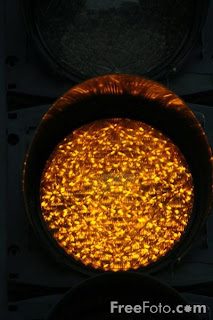
It is hard to believe that 14 years have already passed since that tragic race weekend in Imola.
First, there was the horrible shunt of Rubens Barrichello during Friday's afternoon practice session. Barrichello survived but suffered injuries that made him unfit to race. Come Saturday qualifying, rookie Roland Ratzenberger was killed after a damaged front wing broke off during his entry in the fast Villeneuve corner. Ratzenberger's car crashed into the concrete wall at around 189mph and died instantly.
Senna witnessed both events, shocked, saddened and ultimately compelled to action. He initiated a meeting Sunday morning with fellow drivers to push for better safety in Formula 1. As the then most senior driver, Senna took the initiative to lead the effort.
But come the race, Senna too was killed. His Williams inexplicably veered off the track upon exiting Tamburello and impacted the concrete wall at 135mph.
Arguably the biggest superstar the Sport had ever known was now gone. Best known for his profoundly introspective insights, unwavering commitment to push his car to the absolute limit, his superiority in racing under wet conditions and of course his three titles driving the Honda powered McLaren, Senna's death was a shock that ultimately changed Formula 1 for good.
First, there was the horrible shunt of Rubens Barrichello during Friday's afternoon practice session. Barrichello survived but suffered injuries that made him unfit to race. Come Saturday qualifying, rookie Roland Ratzenberger was killed after a damaged front wing broke off during his entry in the fast Villeneuve corner. Ratzenberger's car crashed into the concrete wall at around 189mph and died instantly.
Senna witnessed both events, shocked, saddened and ultimately compelled to action. He initiated a meeting Sunday morning with fellow drivers to push for better safety in Formula 1. As the then most senior driver, Senna took the initiative to lead the effort.
But come the race, Senna too was killed. His Williams inexplicably veered off the track upon exiting Tamburello and impacted the concrete wall at 135mph.
Arguably the biggest superstar the Sport had ever known was now gone. Best known for his profoundly introspective insights, unwavering commitment to push his car to the absolute limit, his superiority in racing under wet conditions and of course his three titles driving the Honda powered McLaren, Senna's death was a shock that ultimately changed Formula 1 for good.
His death led to more drastic means of improving safety within the sport. Gone are the days when risk and danger were part of the glamor of Formula 1.
Until this very day, Ayrton Senna remains to be the last driver to be killed while driving a Formula 1 car. The new culture in the paddock dictates that advancements in safety is just as important as improving the engine or the chassis.
Numerous shunts have taken place after Senna's death, all of which could have been easily fatal. But because of the pursuit of ever-improving safety, many drivers have been spared from death or seriosly debilitating injuries.
However, the pursuit for better safety wasn't all smooth sailing. A fire marshal was killed after an accident during the 2000 Italian GP. The following year, a volunteer marshal was also killed during the 2001 season opener in Australia when Jacques Villeneuve's BAR Honda collided behind Ralf Schumacher's Williams.
But like Senna's death, the tragedies were used as lessons to once again improve safety even more. And since 2001, no deaths have been recorded in the sport.
It's been 14 years since Senna volunteered to lead the cause for better safety. Ironically, it was his death that ultimately led to realizing that vision. In motor racing, it could be said that Formula 1 is also the pinnacle of safety.




























